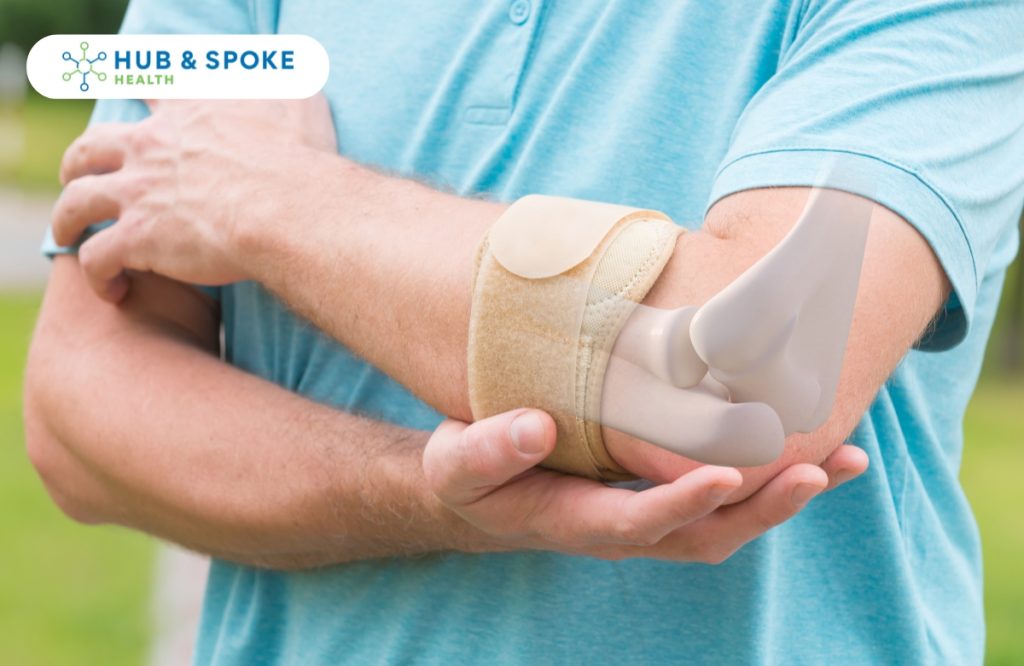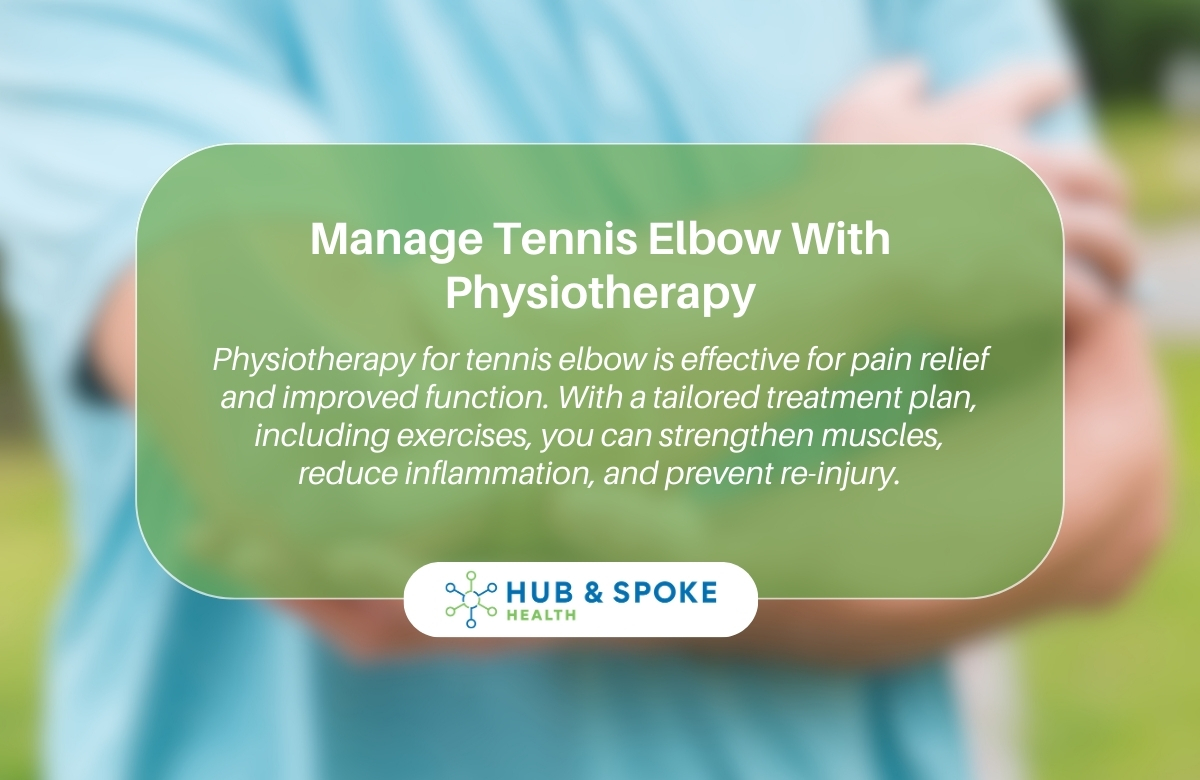Are you struggling with tennis elbow and looking for ways to manage the pain and improve your condition? Physiotherapy could be the answer you’ve been searching for.
Tennis elbow, a common overuse injury, can be debilitating and affect your daily life. While rest and self-care measures can help, physiotherapy offers a more structured and effective approach to treating this condition.
Physiotherapy techniques, including exercises and manual therapy, can help relieve pain, improve strength and flexibility, and promote healing in the affected area.
What is tennis elbow?
Tennis elbow, also known as lateral epicondylitis, is a disorder that causes pain and inflammation in the outer area of the elbow. Despite its name, this condition is not confined to tennis players and can affect anyone who frequently exercises their forearm muscles.
Tennis elbow is caused by repetitive motion and overuse of the muscles and tendons that link to the lateral epicondyle, a bony protrusion on the outside of the elbow.
Common causes of tennis elbow
Tennis elbow is primarily caused by repetitive or strenuous wrist actions such as gripping, twisting, or extension. These activities put a strain on the tendons that link to the lateral epicondyle, resulting in minor tears and inflammation.
Tennis elbow can be caused by racquet sports activities, golf, weightlifting, typing, painting, gardening, and repetitive hand or wrist movements in various professions.
Common symptoms of tennis elbow
Tennis elbow pain, discomfort and soreness are most commonly felt on the outer side of the elbow, and they can intensify over time.
The arm pain may spread down the forearm and intensify during gripping or wrist movement.
Other symptoms may include forearm weakness, weak grip strength and soreness or discomfort when fully stretching the wrist and forearm muscles.
Physiotherapy treatment for tennis elbow
Physiotherapy can be a very effective way to manage tennis elbow. Here are some of the techniques a physiotherapist might use:
- Rest and activity modification: This is the first step to allow the inflamed tissues to heal. Your physiotherapist will help you identify activities that aggravate your pain and suggest modifications or alternatives.
- Ice therapy: Applying ice packs to the affected area for 15-20 minutes at a time, several times a day, can help reduce inflammation and pain.
- Exercise therapy: Specific exercises will be designed to improve flexibility, strengthen the forearm muscles, and improve tendon resilience. These exercises will typically progress gradually as your pain improves.
- Manual therapy: Techniques like massage and soft tissue mobilisation can help reduce muscle tension, improve blood flow, and promote healing.
- Other modalities: Some physiotherapists may also use modalities like dry needling, ultrasound or shockwave therapy to promote healing and pain relief. The use of these techniques depends on individual cases.
If you’re experiencing tennis elbow, consulting a physiotherapist can help you manage the pain and regain full use of your arm. We will develop a personalised treatment plan to address your specific needs and get you back to your activities as soon as possible.
The benefits of physiotherapy for tennis elbow
Physiotherapy has been demonstrated to be beneficial for both the short and long-term treatment of tennis elbow. Physiotherapy for tennis elbow has the following benefits:
1. Pain relief
Physiotherapy can help reduce pain in the elbow by using a variety of techniques, such as manual therapy, dry needling, ultrasound, and electrical stimulation.
2. Improved range of motion
Tennis elbow can cause stiffness in the elbow joint. Physiotherapy can help improve the range of motion by stretching the muscles and tendons around the elbow.
3. Increased strength
Physiotherapy can help strengthen the muscles in the forearm and wrist, which can help prevent future injuries.
4. Improved function
Physiotherapy can help improve your ability to perform daily activities, such as lifting objects and gripping.
5. Reduced risk of recurrence
Physiotherapy can help identify and address any underlying postural or biomechanical problems that may be contributing to your tennis elbow. This can help reduce your risk of developing tennis elbow again in the future.
Important factors that can affect your recovery time
- The severity of your injury: More severe tears in the tendon will take longer to heal than minor ones.
- Your adherence to physiotherapy: If you do your exercises regularly and as instructed, you will likely recover faster.
- Your overall health: People with good overall health tend to heal faster than those with chronic health conditions.

Final thoughts
Physiotherapy treatment to manage tennis elbow is a safe and effective way to alleviate pain and improve function.
Following a customised treatment plan and incorporating exercises and techniques recommended by your physiotherapist, you can strengthen and stretch the affected muscles, reduce inflammation, and prevent further injury.
Remember, consistency and patience are key, so stick with your physiotherapy program and you’ll be feeling better in no time!
Book an appointment with us today! Our team of experts will lead you down the best treatment path for your recovery.
Author
-

Hub & Spoke is a unique Allied Health service that delivers the latest in therapies and treatments to you both in-home or at work to make health care accessible to everyone.
View all posts

















